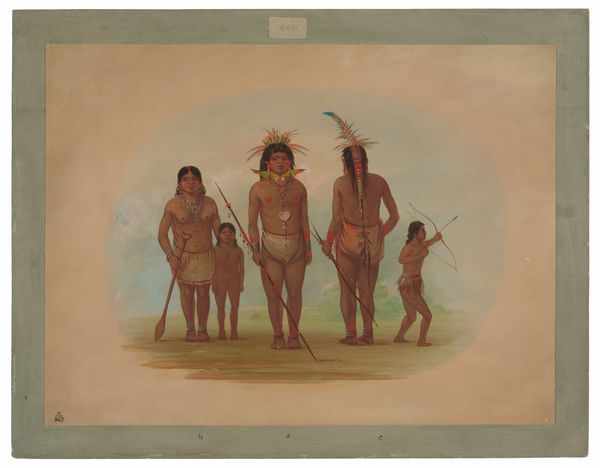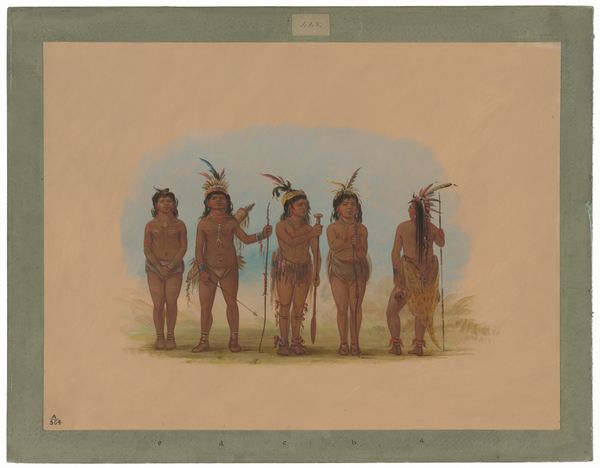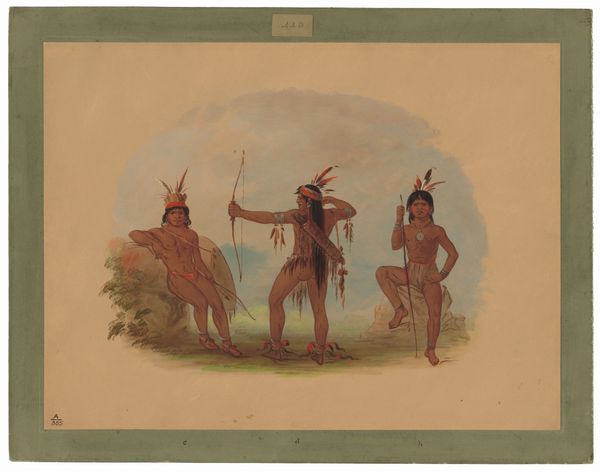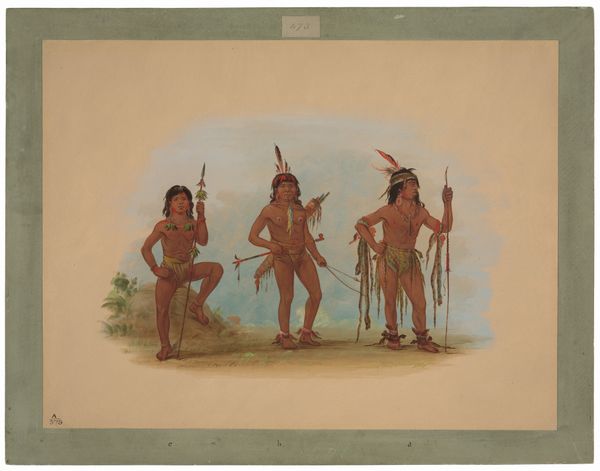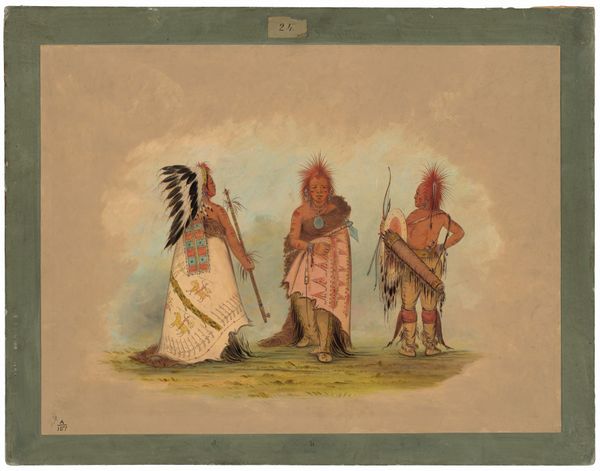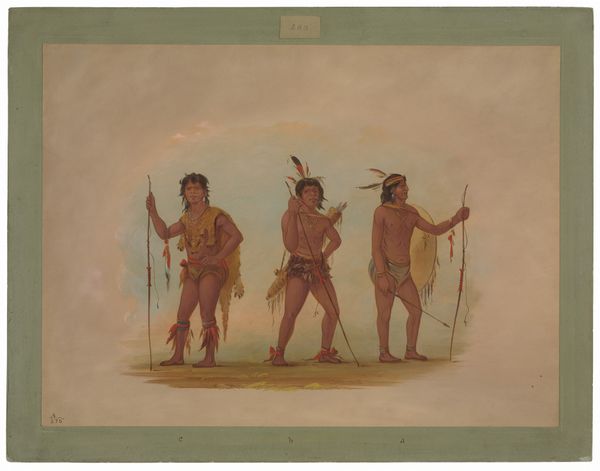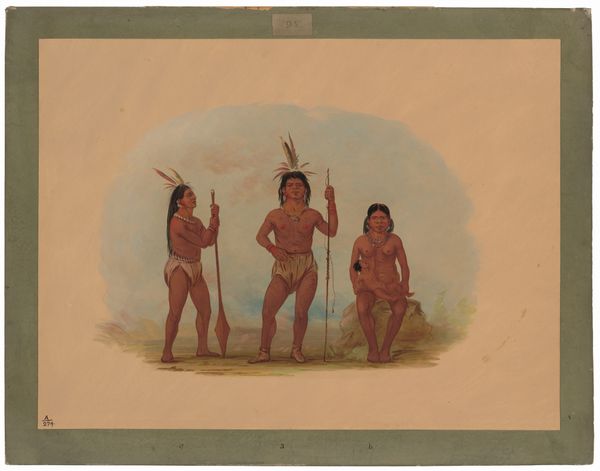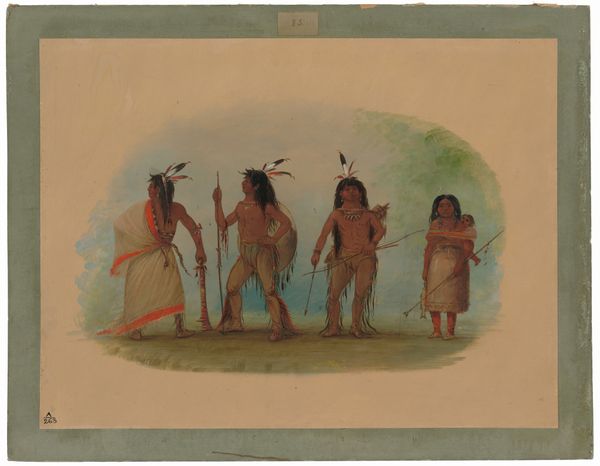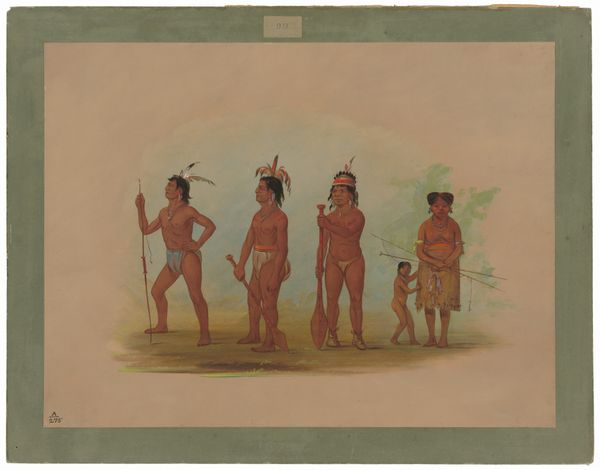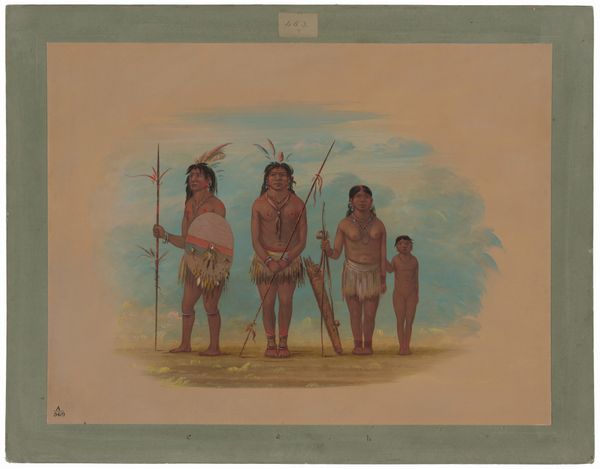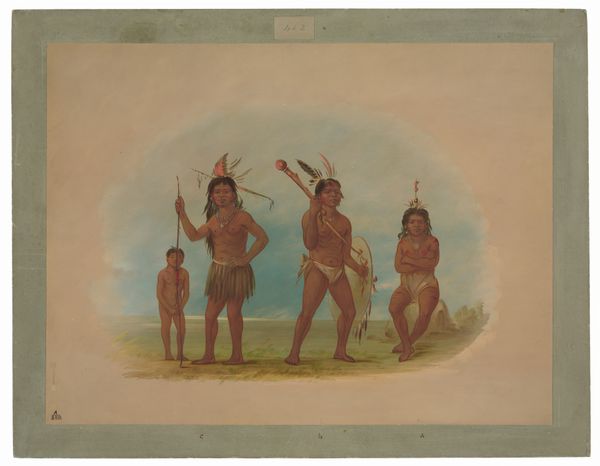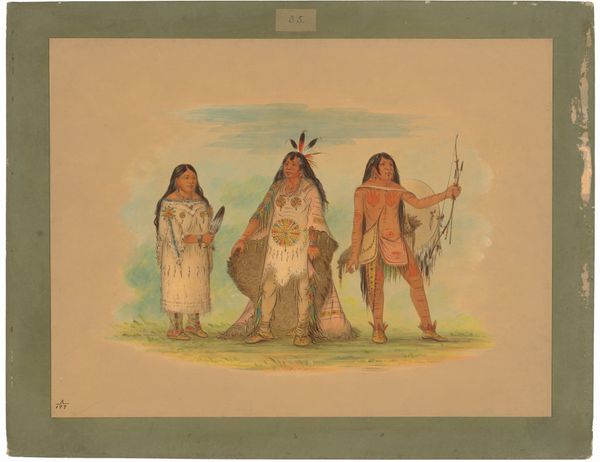
drawing, paper, pencil
#
portrait
#
drawing
#
water colours
#
figuration
#
paper
#
pencil
#
watercolour illustration
#
watercolor
Dimensions: overall: 45.1 x 61.4 cm (17 3/4 x 24 3/16 in.)
Copyright: National Gallery of Art: CC0 1.0
Curator: Hello! Welcome. Let’s discuss George Catlin's "Apachee Chief and Three Warriors," dating roughly from 1855 to 1869, done in watercolor. Editor: Thank you! It’s striking how these figures, seemingly caught between worlds, are rendered so academically. It almost feels like a Western gaze imposed on an Indigenous subject. What are your initial thoughts on this piece? Curator: Absolutely. The academic style, combined with the subject matter, creates a tension. Catlin aimed to document Indigenous peoples, but through a lens inevitably shaped by his own cultural background. How does this tension influence your understanding of narrative and representation within the work? Editor: I suppose it makes me question the "truth" of the representation. It's not simply a portrait, but a portrayal filtered through a particular worldview, maybe a romanticized or even biased perspective. Curator: Precisely. Think about the power dynamics at play. Who is doing the representing, and what are their motivations? Catlin's work can be viewed as both a valuable historical record and a product of colonialism, simultaneously documenting and shaping perceptions of Indigenous identity. Consider the choice of watercolor too - how does that contribute to the mood? Editor: Watercolor seems almost…gentle, maybe even softening the realities of the situation at the time. The hues create this distance between the subjects and the viewer. Almost like we're viewing them through a screen. Curator: Yes, that visual distance reflects a social and historical one. It prompts us to confront the uncomfortable questions about the representation of marginalized groups and the role of art in perpetuating certain narratives. Editor: That’s fascinating. I came in seeing a historical document, but I'm leaving thinking about the complex interplay of power, representation, and cultural interpretation. Curator: Exactly! And recognizing the way art both reflects and shapes these narratives is the key. Art is rarely neutral; it’s always participating in a conversation.
Comments
No comments
Be the first to comment and join the conversation on the ultimate creative platform.

